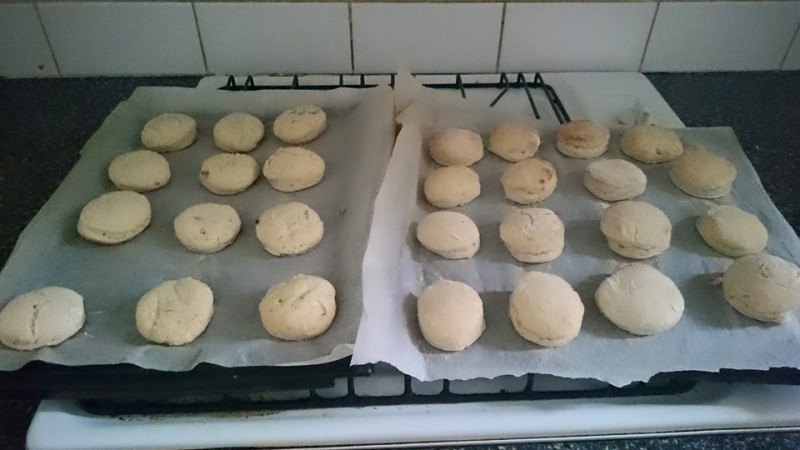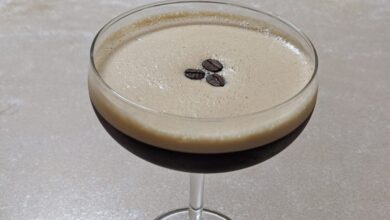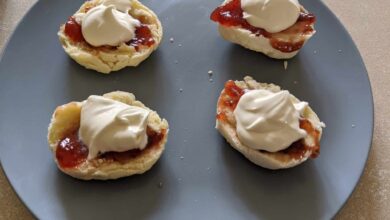Substituted Lemonade Scones – A Recipe For Disaster/Life
NOTE: If you came looking for a recipe for lemonade scones without cream – either lemonade scones with milk instead of cream, or scones with yoghurt and lemonade those recipes can be found HERE.
If you’d like to read a story about a kitchen fail – keep going below!
Substituted Lemonade Scones – a recipe for disaster life.
Today I decided to make lemonade scones. I’d made them a few days ago and they surpassed all my expectations. Having made scones the traditional way – rubbing butter into flour and so on – the concept of lemonade scones both intrigued and horrified me.
I followed the Taste.com recipe – the three simple ingredients are 3 cups of self raising flour, 1 cup of lemonade and one cup of cream. Mix. Knead. Roll. Cut. Then bake for approximately 10-15 minutes. Done.
Incredibly they worked. I expected the lemonade would curdle the cream – but nothing like that happened. Actually it formed delightfully soft and smooth dough, that while being exceptionally pliable, wasn’t as sticky as I expected. I’d piled flour onto my bench before rolling it out, expecting the dough to be tacky – and it didn’t become stuck to either my bench, rolling pin, or the avent baby bottle lid I used as a scone cutter.
I was so impressed with the resulting scones that I decided shall never rub butter again.

However, today my scone making came to an abrupt halt when I realised we do not have any cream! With a 3 ingredient recipe, it’s probably important to have all of those ingredients. However, feeling brave, I decided to have a go ahead and substitute the cream with full fat greek yoghurt, which we have in abundance. I have made yoghurt pizza dough previously, so I felt pretty optimistic that it would work.
As I reached for the flour I realised I’d used almost all of our self raising flour on my last batch of scones. Not to worry – I had plenty of plain flour, and surely there is some bi-carb and cream of tartar, so I could just sift up some self raising flour myself.
But alas, even after removing half the contents of my pantry I could only uncover the bicarb. Perhaps I’d used all the cream of tartar last time I made play dough.
A normal, sensible person would give up at this point, but I am not a sensible person. I had a small helper perched on a bench stool, eagerly awaiting an opportunity to squish some dough between her fingers, so I didn’t want to disappoint her.
I was committed. It was scones or bust.
After a quick google, I found the purpose of the cream of tartar is to provide an acid to activate the leavening agent – the bi carb. That as long as I included some other acid in the recipe this should go fine. One of the suggested substitutes I read was using yoghurt instead of milk to provide some acidity to an otherwise acid free recipe.
Finally things were looking up. We were on the rise. (Sorry. Bad pun)
Also, the lemonade would have plenty of acid to get the bicarb going.
And yes – I did actually have lemonade for my lemonade scones.
#winning
Straight away I noticed the mixture didn’t combine quite as smoothly as the cream version, however it did come together okay, obviously the yogurt is thicker than the cream so the mixture wasn’t quite as wet. However for whatever reason it was much – much – stickier. This was the texture I’d expected from my first batch. It stuck to everything. The bench. The rolling pin. My daughter. Everything.

But I still managed to get them cut into little circles and into the oven without too much drama (and only a bit of mess that I’m avoiding scrubbing it off my bench right now as I type.)
After about 12 minutes in a moderate oven some of them did look a little bit like scones. Some of them looked more like biscuits. So visually it was almost successful.

As for the taste and texture – I’d generously describe them as “not terrible”. They have a little bit of a bitter taste on their own, but it disappears under some jam and (sour) cream. They’re certainly not the light and fluffy scones I’d had a few days ago – but I guess in their own way they are somewhat edible.

Overall though I feel there is a lesson in here:
If life gives you lemonade – make lemonade scones. Unless you don’t have cream and self raising flour – then you should probably just drink it.




Rachel … you sound exactly like me!!!!!!!!!!!!! I see a recipe and I instantly substitute some items. However, for some reason my lemonade scone recipe said ‘thickened cream’ .. which I couldn’t find at Checkers. So I do have Greek Yoghurt … but now I’m not sure if I want to risk a scone with Greek Yoghurt … and coke (cause when I didn’t find cream, I didn’t buy lemonade) … and then cocoa powder! Hahahaha. I’m fearless though… I don’t mind a flop, I just carry on. Will let you know.
Here I am … back from the kitchen. I found another recipe using Coke and cacao … so this was my recipe at the end (keeping your note regarding the Greek Yoghurt in mind) … 2 c self-raising flour, 1 c cacao, 1/2 c Greek Yoghurt, 1/2 c fat-free milk, 1 c Coke, 1/2 c desiccated coconut (but one can’t really taste it). Baked it at 220 oC for about 17 minutes.
It has a lovely texture, although not sweet at all. But with some jam, really nice.